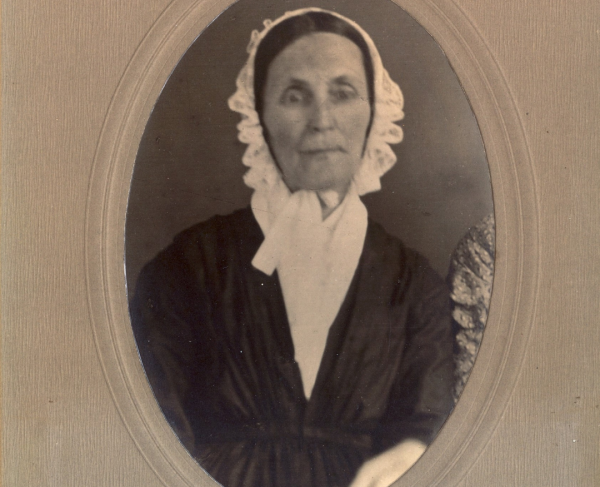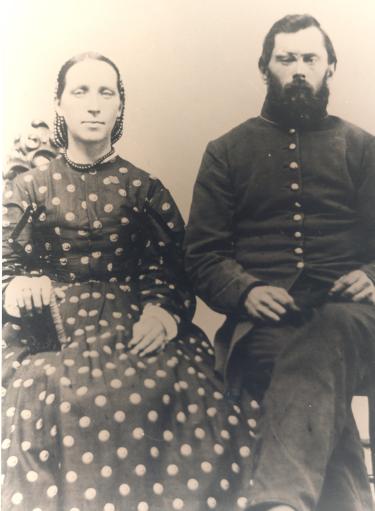Mary Thompson

People had been living peacefully in and around Gettysburg for more than 75 years before the Civil War brought mighty armies to the town and forever changed its character and landscape. In 1863, Mary Thompson, a widow for more than two decades, had been living in a stone house on what is styled Seminary Ridge for 17 years. On July 1, Confederate General Robert E. Lee’s staff selected Thompson’s house as the general’s headquarters, and Mary’s life was irreversibly changed.
Born Ann Marie Long in Littlestown, Pennsylvania, on November 12, 1793, she married Daniel Sell when she was in her mid-twenties. By 1821, the Sells had two daughters, Eliza and Hannah, and were living in Maryland. The following year, while Mary was six-months pregnant with a third daughter (to be named Mary Jane) Daniel died suddenly, rendering Mary a widow at an early age…but not for long.
By 1826, Mary was married to Joshua F. Thompson and was living northwest of Gettysburg. Mary gave birth to five more children—two boys and three girls—while married to Joshua while living a modest farm life. Joshua worked as a “choper” sic. and owned no more than a few cows and horses each year. After the birth of their third daughter in 1836, Joshua Thompson apparently abandoned his family—he no longer appears on tax or census records thereafter. In 1841, Mary’s oldest daughter petitioned the Adams County Court to have her stepfather declared a “habitual drunkard.” By March 1850, Joshua Thomson was dead, and Mary was a widow again.
By then, the Widow Mary Thompson had already been living in the now-famous stone house for several years. At an 1846 sheriff’s sale, a man named Thaddeus Stevens purchased this property “in trust” for Mary Thompson—married women in Pennsylvania could not yet own their own houses. Mrs. Thompson raised some of her children in the stone house; she tended a small garden; she had a dog with its own little house. By 1863, her children had grown and moved out—one directly across the road and another just a few hundred yards away—which left the Widow Thompson alone in the stone house. Life was peaceful. Gettysburg was an up-and-coming place, and she was comfortably situated on its outskirts.

When the largest battle ever fought on American soil descended upon Gettysburg, Mrs. Thompson remained in her home throughout, despite the proximity of her home to intense combat. She tended to wounded soldiers around her home. Some were buried close to her house. After the armies departed, reporters and sightseers came calling, wanting to see and learn more about the Robert E. Lee and the battle that swirled around the stone house. The evidence suggests that Mary was not find of her newly found fame. Mary left Gettysburg for a short time after the battle, perhaps because of the crush of visitors.
Whether she enjoyed her fame or not, it did not help her financially, for Thaddeus Stevens, now a powerful antislavery U.S. Congressman, continued to assist Mary until his death in 1868. Mary Thompson died of tuberculosis and old age in May 1873.
Her home continued to attract visitors long after her death and eventually tourists were able to stay in cottages next to the house. A motel and restaurant thrived on this part of the battlefield and a lucky few were able to sleep in the stone house. By the early 2000s, the motel had a pool, gift shop, putting green and other amenities. The owners approached the American Battlefield Trust in 2013, and the latter announced a fundraising effort to preserve and restore 4 acres, her stone house and a home across the road where her son, James Thompson, had lived during the Civil War. In October 2016, the American Battlefield Trust unveiled the restoration effort. For the first time in more than a century, Mary Thompson, if she was still living, would recognize her home.
Most of the information in this article comes from the 1995 book, The Story of General Lee’s Headquarters, Gettysburg, Pennsylvania, by Timothy H. Smith.
Related Battles
23,049
28,063


